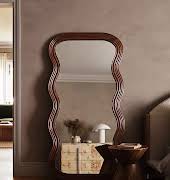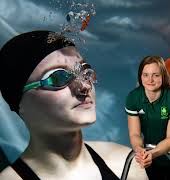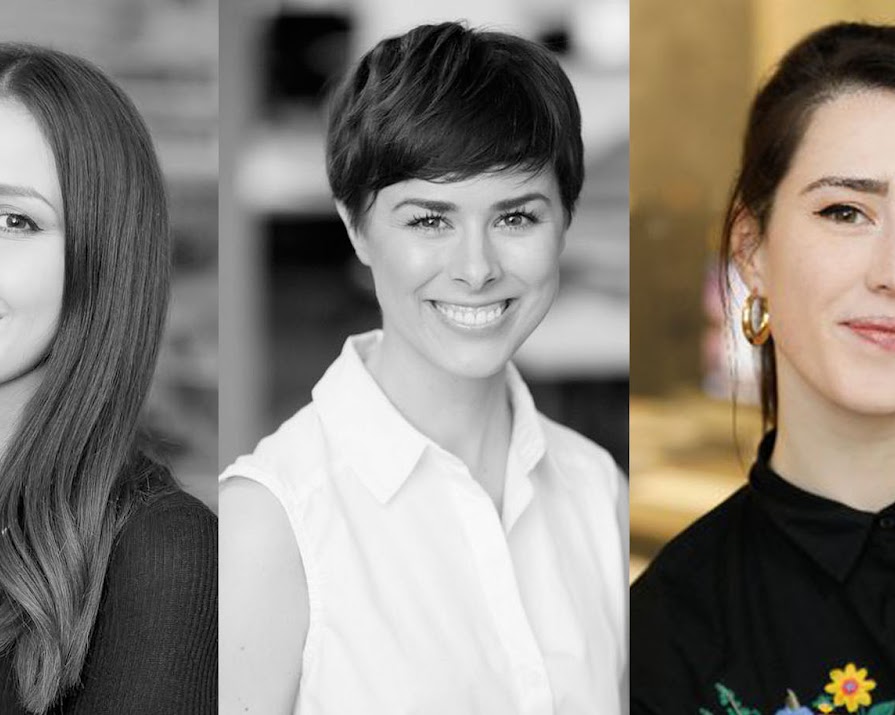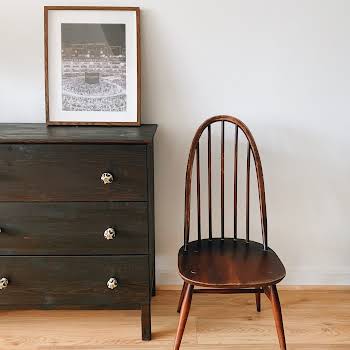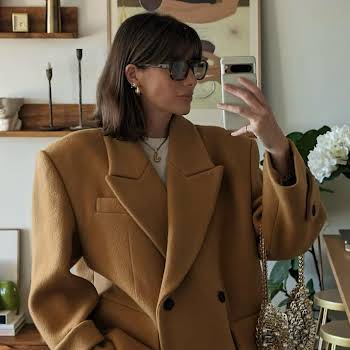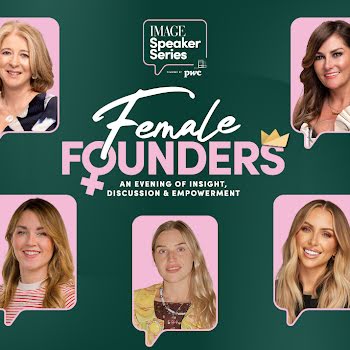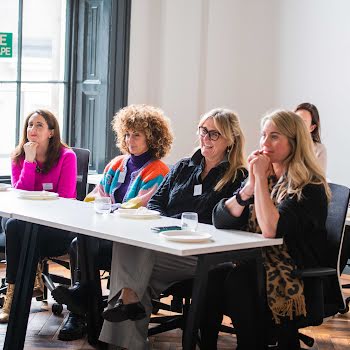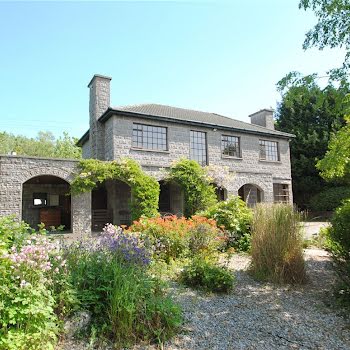
By IMAGE
30th Sep 2018
30th Sep 2018
Challenge: Grow your own vegetables
By Sophie Teyssier, Social Media Manager
When I heard IMAGE.ie was going to host a ‘Sustainability Month’, I was a little nervous to hear what it would entail. In saying that, I do actually lead a sustainable (ish) lifestyle. I love to buy vintage, I recycle all the correct plastics and paper etc, I have a compost bin, I turn off the tap between brushing my teeth, I have a Keep Cup; I know I’m not the worst but I know I’m certainly not the best either.
For ‘Sustainability Month’ each member of the digital team was tasked to make one big sustainable change in their daily routine. I initially jumped on the bandwagon of ‘Oh, I won’t buy any new clothes this month’. I mean, it seemed like an easy one to get involved in. (Not so much.)
In the end, I thought well my boyfriend and I do grow our own herbs and vegetables. That is quite sustainable of us. Truth be told, he’s really the one with the green hands out of the two of us, but I thought I could give it a go and show our plants some love for the month of September. He was tasked with stepping away from being our resident farmer/ gardener allowing me to take the lead. (Eek)
The results? Nothing died! And you will also never taste something as delicious as a homegrown tomato. That’s no exaggeration. I am now definitely hooked on growing my own tomatoes! If that’s not a sustainable step forward, I don’t know what is.
Challenge: Wear eco-deodorant
By Geraldine Carton, Staff Writer
When we were each invited to try an “eco challenge” for Sustainability month, the idea of all-natural, eco-friendly deodorants immediately sprung to mind. Many of my friends have been swapping their aerosols for natural-alternatives so I wanted to see what the hype was about.
The initial eco-deodorant I tried was an all-natural botanical one. From the get-go I’ll say that if you’re into botanicals, then you’ll probably love this. I must admit, however, that I wasn’t. The natural oils used in the product made me feel clammy, and although the botanical smell seemed strong enough to cover up any possible body odour, it seemed to actually draw out the inner pong within my pores. So that wasn’t great.
After about a week of botanical deodorant, I tried another called Pit Putty and keeping you smelling fresh is its game. Being used to aerosol deodorants, it felt a bit strange to apply this shea butter-type product onto my armpits. After a few days testing it out, however, I was impressed.
This stuff kept me pong-free all day and well into the night, too. The fact that I was using something that would reduce my carbon footprint made the whole experience all the sweeter still. I’ve been using the putti ever since, and couldn’t recommend it enough. Not only will your B.O. be kept at bay, but your conscious will feel that little lighter as you tick one less environmentally-harmful daily action off your list.
Challenge: Not buying any new clothes
By Erin Lindsay, Staff Writer
I will readily admit it; I have an addiction to buying clothes. I could pin it to working in one of the most fashionable offices in Ireland, or wanting to always have the right outfit for the occasion, but in reality, there’s no real reason – I just really love design and fashion, and let it seep into my buying habits. Which is fine and all, but my wallet and, more importantly, the Earth, is in need of a change.
I took on the challenge of not buying clothes for the month in an effort to not contribute to the ridiculous waste of the fast fashion industry. As one of the most polluting industries in the world, fast fashion is literally killing the planet, all in the name of micro-trends. It was also a personal challenge too, as I knew in my heart that I needed to cop on and stop the spending.
It started out all so well – I saw plenty of clothes that were tempting, but chose to look the other way, and was genuinely really proud of my restraint. I began to see how frivolous some of my impulse buys were, and the impact those few euros was having on the planet, with no actual benefit to me or my wardrobe. As I exclusively shop on the high street, my suede booted-carbon footprint was significantly higher, and it actually felt good to begin to curb it.
But, dear reader, I happened to go on holiday halfway through the month. To Spain, which, as you may know, is home to Zara – which is cheaper there than in Ireland. I deliberated, I dithered, I argued with myself – but in the end, I bought the damn jacket.
I’m telling you my failings at the month’s challenge in the interest of honesty – I debated pretending that the month had been a total success, but what good would that do? In the real world, being eco-conscious is really hard. Temptations to be lazy or to be selfish pop up all the time and sometimes, we give in to them – we’re human. But the real challenge lies in hopping back on the bandwagon after a slip-up and consistently making more of an effort to be cleaner, greener and kinder to the earth. I slipped up this month – but I’m giving it another go in October. And I have a feeling I’ll be much better this time.
Challenge: Sustainable periods
By Niamh O’Donoghue, Digital Leader
Working in the fashion industry has had quite a big impact on my life and my approach to sustainability. As a whole, we’re more aware than ever of the harmful effects of over-production, using cheap, harmful materials and the cost to both human and animal life. Similarly to Erin and Geraldine, I too stopped buying clothes a few months ago and I try to minimise my footprint as much as I can throughout the day, but I wanted to take my efforts one step further. Menstruation is one of the most natural things to happen to a woman, but the by-products of it have been clogging our water systems and dumps. So far I’ve had fourteen years worth of periods: that’s 168 cycles, the moods and cramps that goes with it and hundreds – if not thousands – of sanitary products.
Conventional pads and tampons are usually made from a combination of plastic, rayon, bleach, and other chemicals, and in the UK, there are nine used plastic tampon applicators for every kilometre of beach. Twenty billion disposable menstrual products end up in North American landfills alone. So it was time for positive change.
My biggest fear about switching from conventional to eco-friendly sanitary products was the risk of a bad smell. I tried the Organyc Winged Sanitary Towels, €2.27, at Holland & Barrett. These biodegradable pads are suitable for heavier cycles so are very absorbent and, thankfully, there was no unusual or nasty smell. All Organyc products are free from perfume and colouring agents, which is useful for anyone with sensitive skin. There’s also the Natracare Natural Organic Ultra Pads, but I didn’t think they were as effective for my cycle.
fluffybums.ie – an Irish owned company – also have a big variety of sustainable menstrual bits including cloth nappies and cotton pads that are reusable and fully washable. I haven’t yet tried this brand, but online reviews rate them as super comfortable to wear and easy to clean, which is enough pull to draw me over the sustainability line. I felt no major difference over the week except for my choice of pads were slightly cheaper than the conventional ones. My view is that this is an easy way for women alike to take a small step toward helping the planet.
(Thinking of ditching your pads or tampons for one of these innovative alternatives? Don’t forget to find a good home for your disposables. Homeless Period is a charity helping to provide sanitary products to homeless women on Irish streets. Helping is simple: Just drop off your extra menstrual products at one of the many handy collection points dotted around Dublin, Cork, Galway and Kildare and they’ll do the rest.)
Challenge: Go litter-picking
By Grace McGettigan, Staff Writer
Litter is real bugbear of mine. Whether it’s a plastic bag caught in a tree or a stray Coke can blowing through a green; litter makes my skin crawl (especially when it’s accumulating right next to a bin). When sustainability month launched at IMAGE this month, I knew what I wanted to do. Donning a high-vis jacket and litter picker, I ventured out to make Dublin cleaner.
Initially, I had planned to clean up Irish beaches. I was inspired by 11-year-old Flossie Donnelly who regularly goes litter-picking along the capital’s coast. Flossie even launched the country’s first sea-bin in Dun Laoghaire, so she’s an excellent role model. But then I thought, sustainability begins at home. Rather than cleaning up further afield, I decided to clean up my estate. Believe me, it needed it.
The green space next to my house was littered with torn-up polystyrene (the type that’s used to protect your TV or washing machine). The children from the area had tossed their chocolate wrappers and empty crisp packets on the grass. I felt embarrassed by the mess; what must our visitors think? Setting out one evening after work – rubbish bag in hand – I picked it up. The process was satisfying and the result was great; albeit short-lived.
Within a couple of days, the area was litter-ridden once again. There are cigarette butts everywhere, particularly on the ground near the bus stop. There’s only so much one person can do. While I continue to try keep my area tidy, I ask that everyone reading this does the same. There’s no Planet B; let’s look after the one we’ve got.






